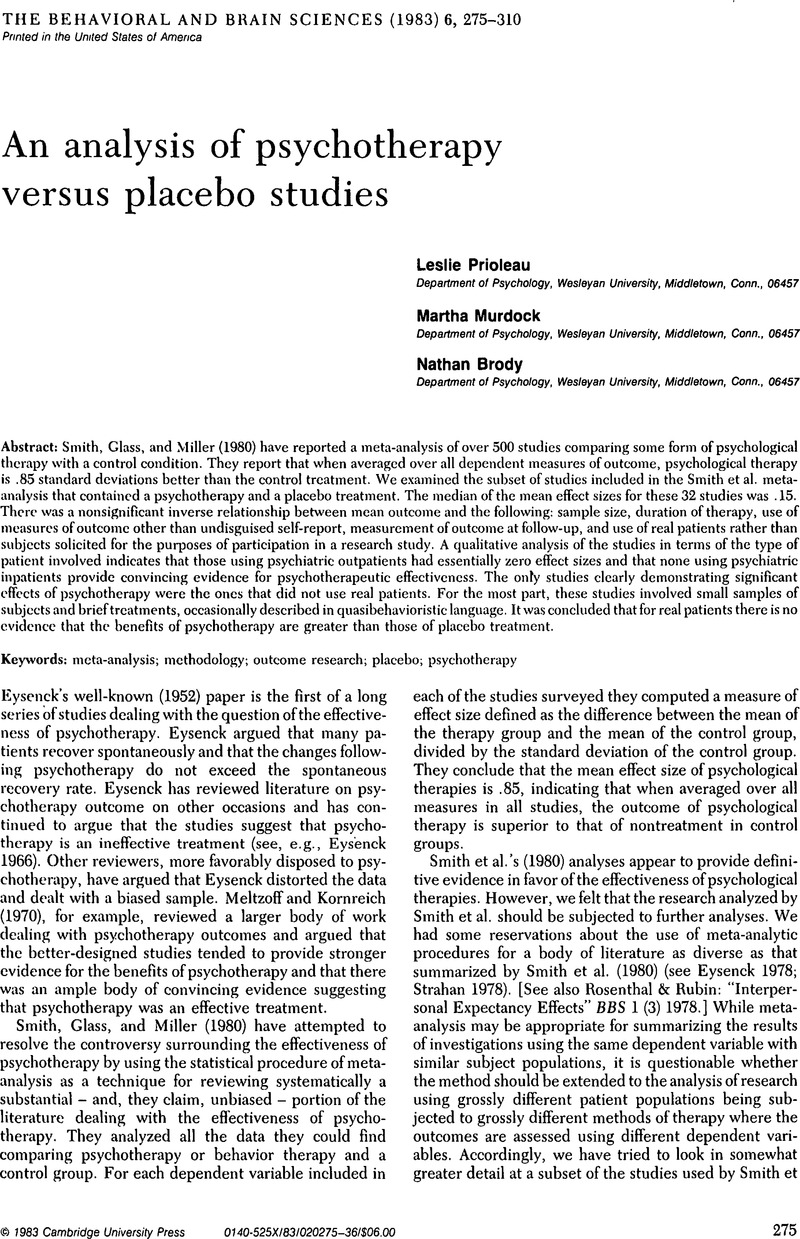Crossref Citations
This article has been cited by the following publications. This list is generated based on data provided by Crossref.
Weinberger, Joel
1984.
Is the meta-analysis/placebo controversy a case of new wine in old bottles?.
Behavioral and Brain Sciences,
Vol. 7,
Issue. 4,
p.
757.
Butler, Stephen F.
Schacht, Thomas E.
Henry, William P.
and
Strupp, Hans H.
1984.
Psychotherapy versus placebo: Revisiting a pseudo issue.
Behavioral and Brain Sciences,
Vol. 7,
Issue. 4,
p.
756.
Brody, Nathan
1984.
Is psychotherapy better than a placebo?.
Behavioral and Brain Sciences,
Vol. 7,
Issue. 4,
p.
758.
Shepherd, Michael
1993.
The placebo: from specificity to the non-specific and back.
Psychological Medicine,
Vol. 23,
Issue. 3,
p.
569.



